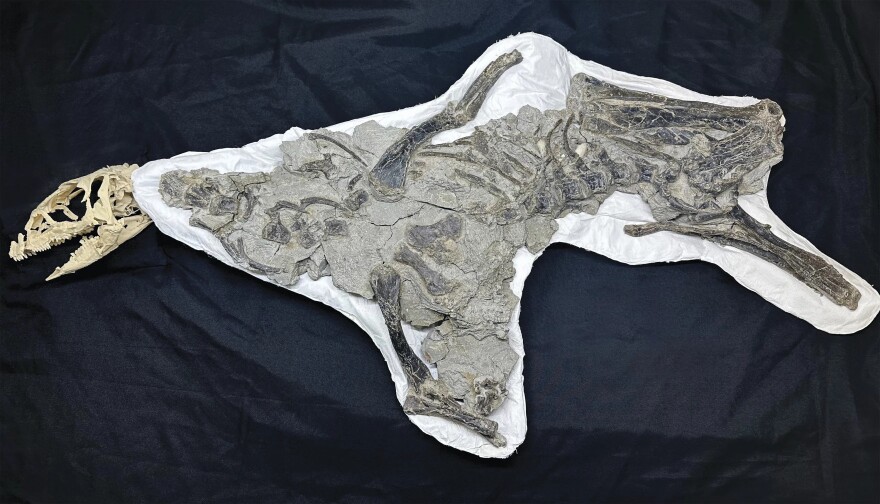North Carolina paleontologists have discovered a new, nearly 100-million-year-old dinosaur in Utah that may shine light on one of the most poorly understood categories of dinosaurs.
Haviv Avrahami, of North Carolina State University and the , named the Fona herzogae.
Avrahami said that these small, plant-eating dinosaurs lived during the mid-Cretaceous period, back when Utah looked more like the Florida Everglades. It was a time of rising sea levels, increasing global temperatures, and extensive extinction events.
“I kind of think of them like they're a gigantic gopher, mixed with a vegetarian crocodile, mixed with an ostrich,” Avrahami said about the new dinosaur. “The really spectacular thing about Fona is that it lived at least part of its life underground. Their bones are really well adapted for burrowing behavior in general in a way that really closely mirrors what we see in modern animals.”
That burrowing behavior is signaled by Fona herzogae’s strong shoulder and arm muscles, strong hips and legs, and their “freakishly” large feet that could shovel away dirt, according to Avrahami.

While a relatively small dinosaur, Fona still would have been about seven feet long, Avrahami said. He added that it's harder to find fossils of smaller dinosaurs — they don't preserve as well.
“These small, plant-eating dinosaurs are one of the most poorly understood groups of dinosaurs in general,” Avrahami said. “It's like a black hole of knowledge in the field, especially in regard to their evolution and their family tree.”
Fona’s underground lifestyle may have contributed to unearthed specimens being uncommonly well-preserved for small dinosaurs. One nearly complete skeleton was found in Emery County, Utah. Avrahami said that if these dinosaurs had their burrows collapse on them, it would have protected the bones from rotting on the surface or from being destroyed by other animals.

The new dinosaur discovery can therefore help fill in gaps in evolutionary history, such as how Thescelosaurus neglectus — a dinosaur with a specimen housed at the North Carolina Museum of Natural Sciences — came to be descended from Fona herzogae 35 million years later.
“By finding Fona, it really starts connecting some of those links,” Avrahami said. “It gives us a better idea of how dinosaurs evolved throughout history, which is really the foundation for us to be able to do a lot of investigations in evolution, extinction, and things like that.”
And, he added, Fona could provide insight into how past animals responded to environmental stressors. That could in turn inform how to better protect animals today, given that the dramatic environmental changes of Fona’s time closely mirror modern climate change.
When naming Fona herzogae, Avrahami said he wanted to honor both his Chamorro ancestry and his mentor Lisa Herzog, the paleontology operations manager at the NC Museum of Natural Sciences who Avrahami described as a constant source of inspiration.
The Chamorro people are indigenous to Guam and the Pacific Mariana Islands. Avrahami said that the Chamorro creation story tells of a brother and sister, Pontan and Fo’na. When Pontan died, Fo’na created different aspects of the world from his body. When she herself died, she threw herself into the earth, became fossilized, and from her fossilized body came the Chamorro people.
“Fona [the dinosaur] was also probably a really beautiful but powerful and benevolent creature that was covered in a coat of vibrant feathers,” Avrahami said. “It lived in close familial bonds under the ground. From its life and from its death came forth new life in the form of its babies, which would eventually evolve to be things like Thescelosaurus.”
Avrahami said the new dinosaur will likely be displayed on the third floor of the North Carolina Museum of Natural Sciences in Raleigh. His paper on Fona herzogae was published in the peer-reviewed journal .









